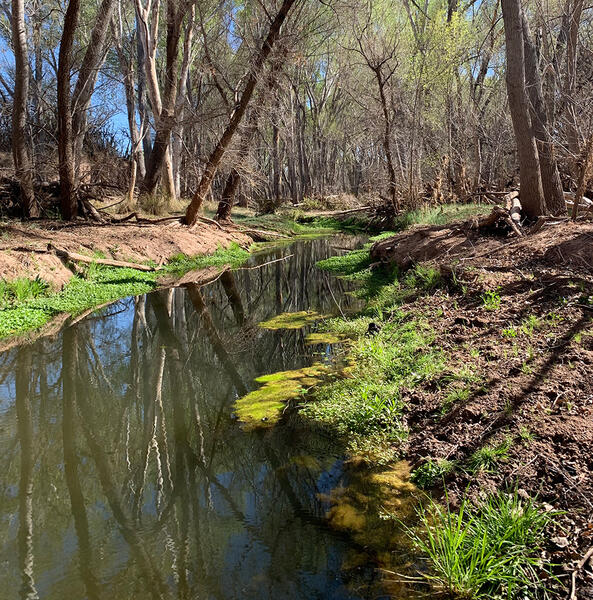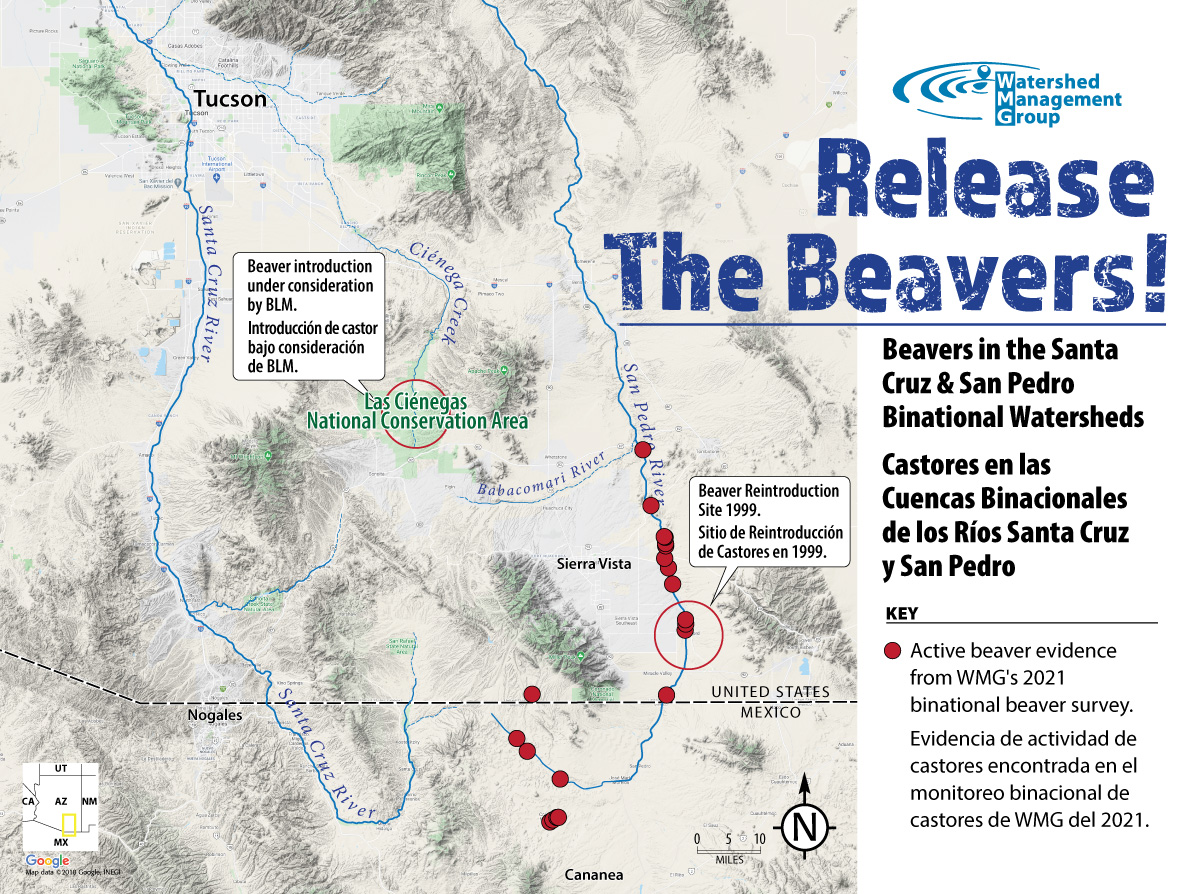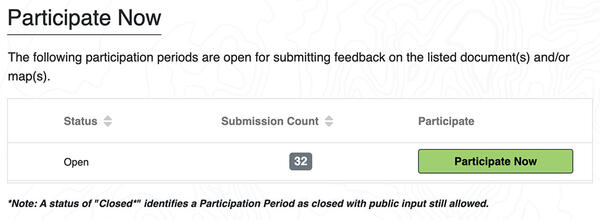It's an important time to take action to help beavers restore Ciénega Creek! The Bureau of Land Management recently took a step toward re-establishing beavers in Las Ciénegas National Conservation Area by posting its Environmental Assessment on this proposal. Thank you to all the WMG supporters who have been part of the Release the Beavers campaign over the last three years, and the over 175 River Run Network members who recently wrote advocacy postcards to help get the Environmental Assessment released!
We've been working to re-establish beavers in Ciénega Creek since 2019 through public education, advocacy, our recent Beaver Practitioners Workshop at Las Ciénegas National Conservation Area, and our Binational Beaver Survey in Southern Arizona and Sonora, Mexico.

What's The Beaver Environmental Assessment?
All major projects on public lands in the U.S. must have Environmental Assessments before being approved, according to the National Environmental Policy Act (NEPA). The Environmental Assessment shows how the project will impact the local environment, suggests multiple ways (aka "alternatives") to accomplish it, and allows the public to make comments before a decision is made. The public comment period for this Environmental Assessment will close on Monday, August 1st, 2022.
WMG’s staff has carefully reviewed the full Environmental Assessment, and we believe this a much-needed opportunity for beavers to do their amazing work recharging groundwater, improving water quality, and creating climate resilience in our region.
 The Environmental Assessment suggests three options:
The Environmental Assessment suggests three options:
Alternative A: Re-establish Beavers with Option to Include Beaver Dam Analogues (BDAs)
Alternative A would re-establish beavers in Ciénega Creek, with the option to also use Beaver Dam Analogues (BDAs) – low-impact, natural structures made from materials like wooden posts that mimic the natural activities of beaver dams, helping to support beavers when they're first released. BDAs increase the chance that beavers will be able to successfully build dams and create communities in Las Ciénegas National Conservation Area. WMG supports Alternative A to provide more flexibility for this effort, and a greater chance of success for the beavers!
Alternative B: No Action
Under Alternative B, beavers would not be re-established in Ciénega Creek. The Environmental Assessment makes it clear that this would have a negative impact on the creek, resulting in the creek and groundwater continuing to dry up, and reduced habitat for native riparian species.
Alternative C: Re-establish Beavers without Beaver Dam Analogues (BDAs)
Alternative C is identical to Alternative A, without the plan for Beaver Dam Analogues (BDAs). WMG supports Alternative A instead of Alternative C to provide more flexibility for the project, and a greater chance of success for the re-establishment effort.
Sample Public Comment
This public comment reflects WMG's views. We encourage you to read the full Environmental Assessment and personalize your comment to reflect why this issue matters to you!
"Thank you for releasing the Environmental Assessment for the Re-establishment of Beaver (Castor canadensis) on Las Ciénegas National Conservation Area. The assessment makes it clear how much re-establishing beavers would benefit Ciénega Creek and the surrounding area: recharging groundwater aquifers, maintaining steady surface flows for aquatic species and slowing down flood flows, improving water quality, mitigating drought, and more. Please move forward with re-establishing beavers in Las Ciénegas National Conservation Area and support Alternative A of the Environmental Assessment to allow the flexibility to use Beaver Dam Analogues (BDAs). I also ask that you approve and begin implementing this project quickly after the EA comment period ends so beavers can start doing their good work at Ciénega Creek, and so we have this example to learn from and potentially apply to other desert creeks and rivers for beaver-based restoration. Drought, climate change, and water shortages pose serious risks to Ciénega Creek and southwest desert creeks and rivers, and it’s important to move this project forward as soon as possible.
Please support Alternative A and allow beavers to help restore our watersheds! Thank you for your consideration."
How Do I Comment?
You can make your public comment directly here. Or, from the "Participate Now" page, place your cursor over the "Beaver Reintroduction" link and scroll to the right until you see a green "Participate Now" button:
Then, click the "Participate Now" button and make your public comment! Note: The extended public comment deadline hasn't been updated on the Participate Now page, but you can still make your comment until August 1st.
Thank you for advocating for beavers to help restore Ciénega Creek!
Want to learn about more ways to advocate for and support our desert creeks and rivers? Join WMG’s River Run Network here.







